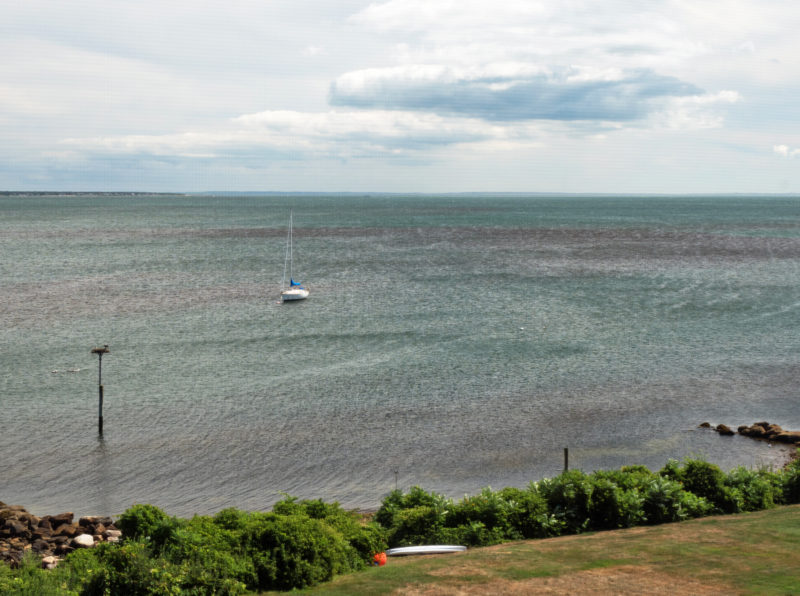Widespread ‘rusty tide’ algae bloom appears in Buzzards Bay
For the first time since 2012, a nitrogen pollution-fueled algae bloom called “rusty tide” has appeared in several Buzzards Bay harbors and coves this August. The Coalition confirmed the rusty tide after staff and volunteers reported reddish-brown water and tested water samples collected from New Bedford Harbor and Clarks Cove.

Rusty tide often appears as distinct reddish-brown bands in the water, like seen here near the Apponagansett Bay breakwater in Dartmouth on August 18. (Image: Tom Gidwitz)
“Rusty tide” looks just like its name: cloudy, reddish-brown water that often shows up in distinct bands across the water’s surface. It’s an explosion in the growth of microscopic algae called Cochlodinium.
Algae blooms like rusty tide are a worrying sign of the effects of nitrogen pollution: the biggest threat to the health of Buzzards Bay. Nitrogen pollution comes from home septic systems, wastewater treatment plants, lawns, roads, and farms. When too much nitrogen gets into the water, it fuels the growth of algae that can create large, murky “blooms.”
Coalition staff aboard the R/V Buzzards Baykeeper® and volunteer Baywatchers discovered rusty tide this month in waters around New Bedford and Dartmouth, including Apponagansett Bay, Clarks Cove, and New Bedford Harbor. It’s the first time since 2012 that the Coalition has recorded widespread rusty tide in Buzzards Bay. There were a few isolated reports of rusty tide in 2013 and 2014 as well.
Rusty tide was first reported in Buzzards Bay 2005. Since then, rusty tides have become more common in Buzzards Bay and other northeastern waters in late summer, when water temperatures are warmest. This combination of warm water and nitrogen pollution creates the perfect environment for algae to bloom.
Rusty tide isn’t harmful to humans. But for the Bay’s fish and shellfish life, the effects of nitrogen pollution can be deadly. Algae blooms starve the water of oxygen and smother eelgrass beds – the most important underwater habitat for small fish, crabs, and bay scallops.
Although the most recent State of Buzzards Bay report shows that nitrogen pollution did not get worse in the past five years, the Bay still faces a major threat from too much nitrogen. And as average summer water temperatures climb due to the effects of climate change, Buzzards Bay is at risk of becoming more like the Chesapeake Bay and Long Island Sound – places where algae blooms, fish kills, and low-oxygen “dead zones” are a typical part of summer.
This summer’s algae blooms remind us that there’s still much work to be done to save Buzzards Bay for future generations. We need continued strong action to reduce nitrogen pollution from septic systems and wastewater.
If you see rusty tide – or any unusual-looking water – in Buzzards Bay, report your sighting to us at (508) 999-6363.